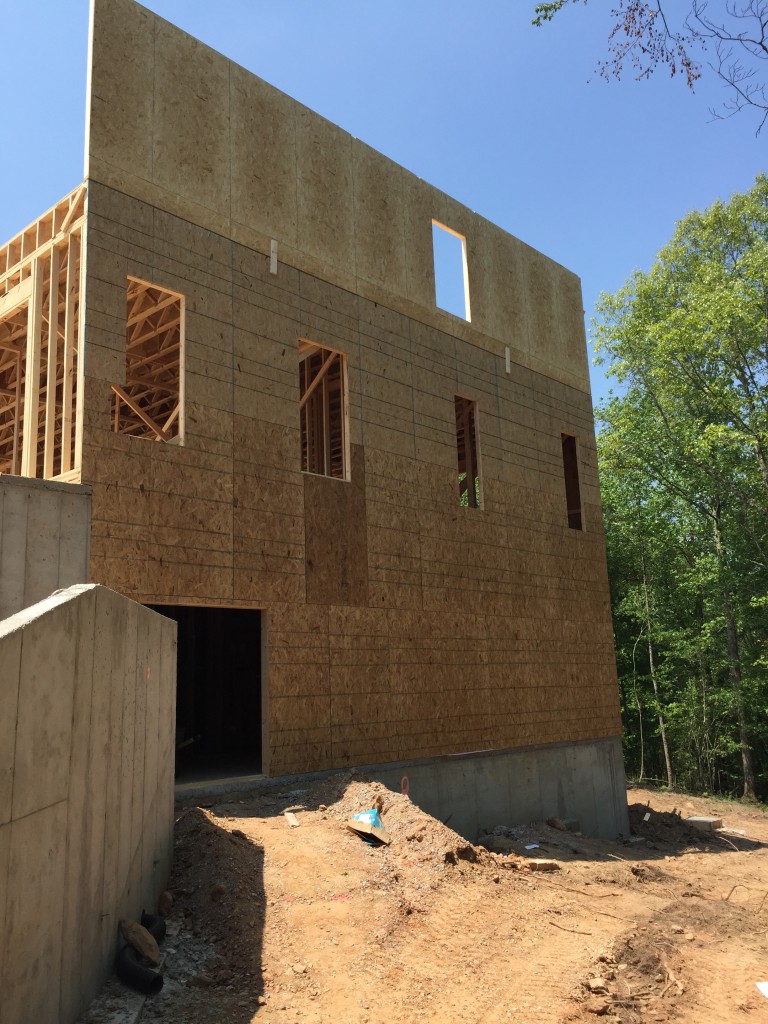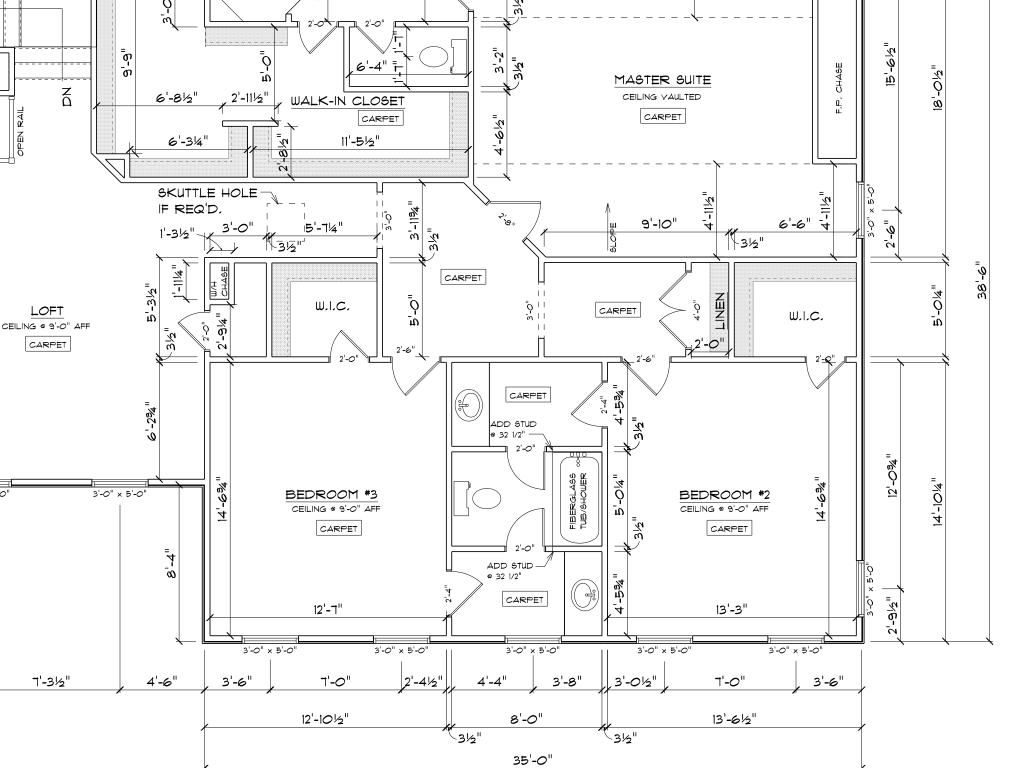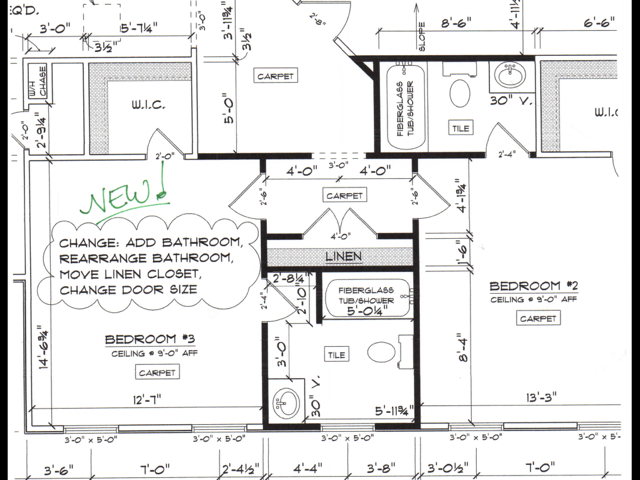Reading other blogs and forums on homebuilding there seems to be a “stigma” to changing something in your plan. You get many lessons on, “Do your homework up front, and don’t make changes after you start.” Although I’d agree with the sentiment, I’d encourage anyone building to do as much homework as possible to get as much in your contract as possible (especially where finishes are concerned. We shopped for (and bought some) finishes 6 months before we signed our contract), but I’d encourage everyone to set aside some amount of money specifically for changes…not upgrades, not the “emergency fund”, but unexpected items that come up, and you want to change. If you have a bit of this budget, you can maximize the potential of the home for you, and minimize your stress. We’ve made several changes that I’m thrilled with, and can say definitely I’d be very disappointed were they not made.
We’ve had a several changes related to the slope of the lot. They were expensive, but they’d been hard to see during the design phase:
- Increased the basement height from 9 to 10 feet. Our house is a little below grade, but we wanted to minimize the feeling of being “below the world” We didn’t want to pay the extra $3k without getting a feel for where the house would sit. Once the lot was cleared, it became clear that an extra foot in height would make a major impact to the feel. With the extra foot, the house almost feels at the grade of the road (it’s about 3-4 ft below).
- Removed more trees. We needed to physically see how much around the house was cleared before we were confident we needed more. We did, and now it’s great $1,500.
- Added a retaining wall and double door to the side of the basement. Our lot slops pretty heavily from front to back, and it wasn’t until we were digging the basement that it became clear that instead of a natural slope from front to back, our front yard and house would look a lot better if we put a retaining wall off the front corner. This is going to be really functional as a direct entrance to my shop, and it really helped give a more gentle slope to the front yard. This change was $600, and probably the most worth it.

This was going to be a natural slope from front to back, but we added the retain wall and door. - There we also had a basement door that needed to be moved because of the slope of the lot. It made much more sense to have to exit more in the middle of the house because of the slope, instead of closer to the side you see in the picture above. This one was free.
We were about to start the framing stage when we really re-thought our bathroom layout. In our plan we went under contract with, we had a full bath and half bath on the main level. The full bath was off the formal living, and it was absolutely redundant and unnecessary for us. You could convert the formal living into a bedroom, but it’s in the front of the house right next to the front door, so it’s a very bad place for a bedroom. Regardless, we knew we’d never use it as a bedroom. We also had a Jack and Jill bath upstairs for our girls. Although that was preferable for our family, most of the neighborhood homes have full suites in the bedrooms. So to save on the big change it would have cost to add another bathroom upstairs, we traded the downstairs bath (now a closet, but can still be converted easily since the basement is accessible) to remove the Jack and Jill and give both the girls a bath. Now that we’re done framing, we’re thrilled, as we used the upstairs space much better, and it’s a much more useful space for a bathroom. This one cost more $400, and it’s worth it!


I’m keeping a running total of my Out of Pocket Costs here.
One final note, if you’re trying to decide if building a custom home is for you, give some realistic thought as to your stress/frustration level of writing a check for 0.1-0.5% of your build cost for something completely unexpected and unavoidable. You will write many of those, whether your the best planner in the world or not, and if that stresses you out, you probably ought to consider something else.